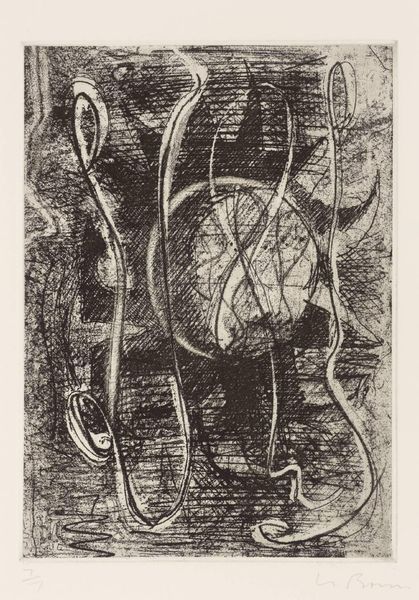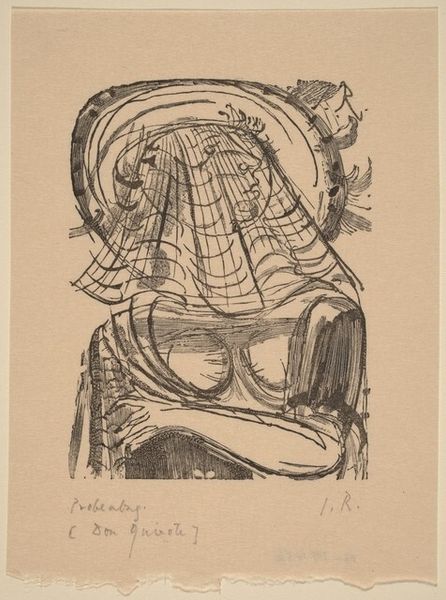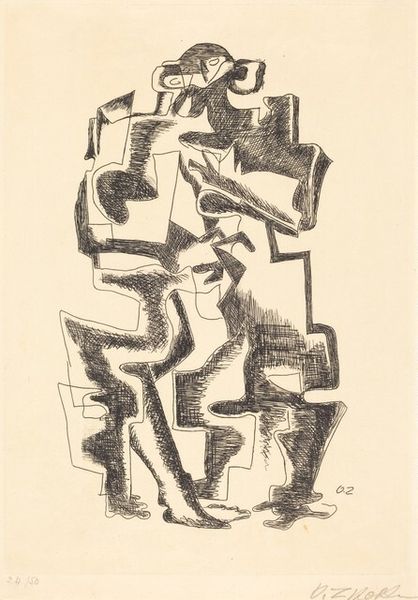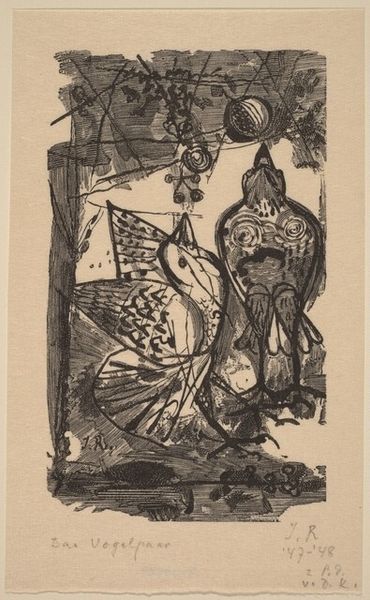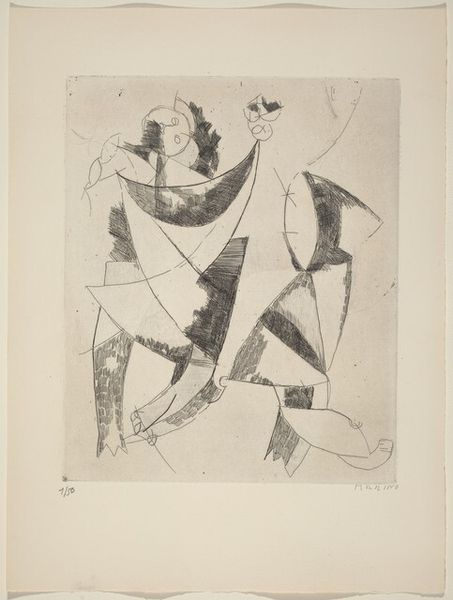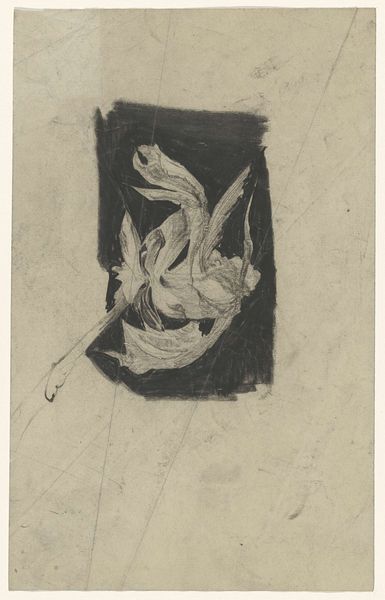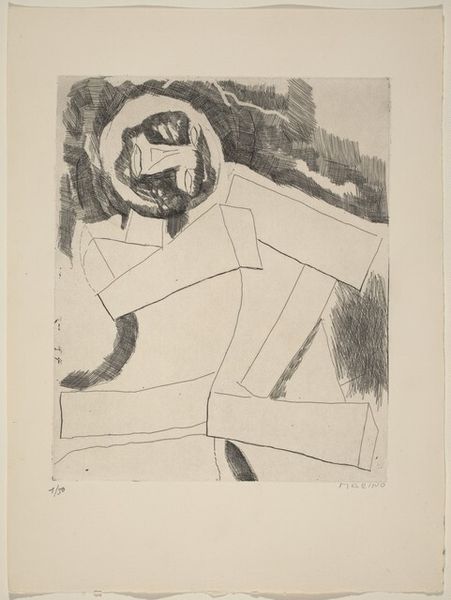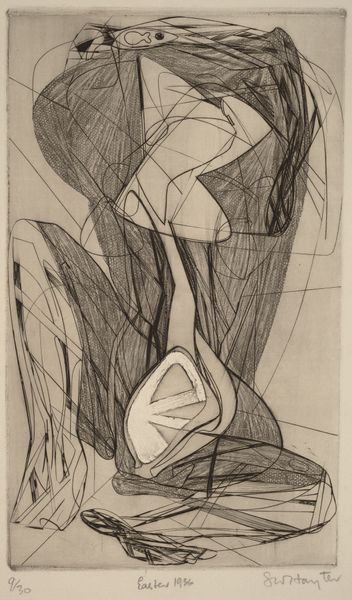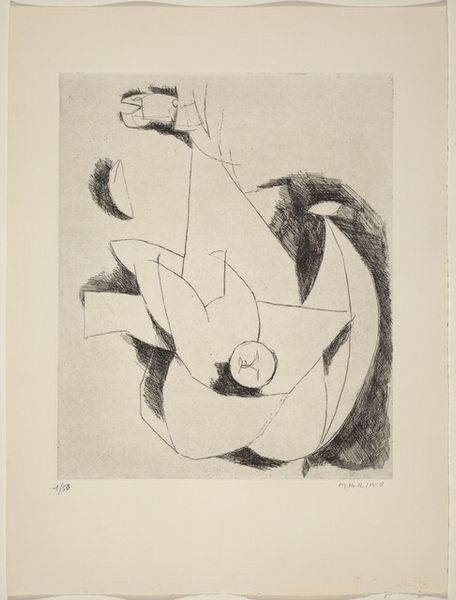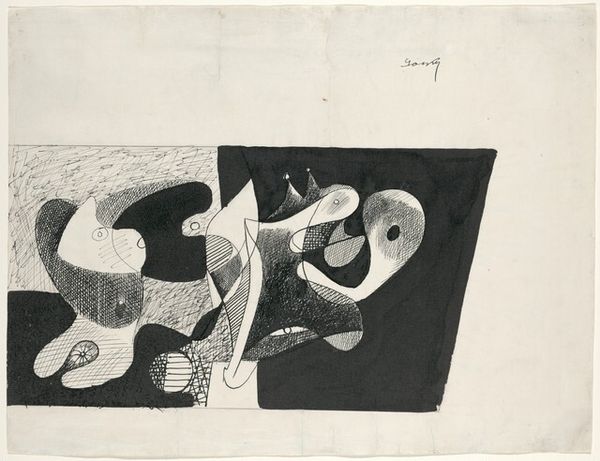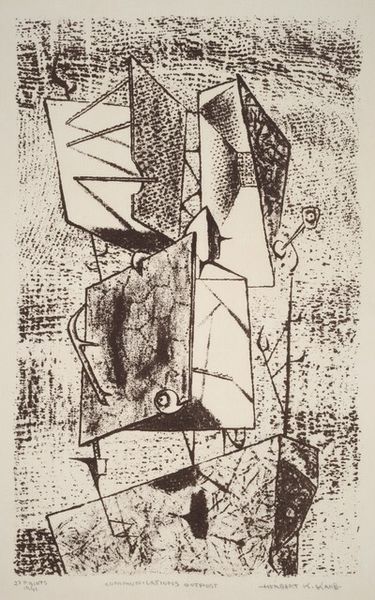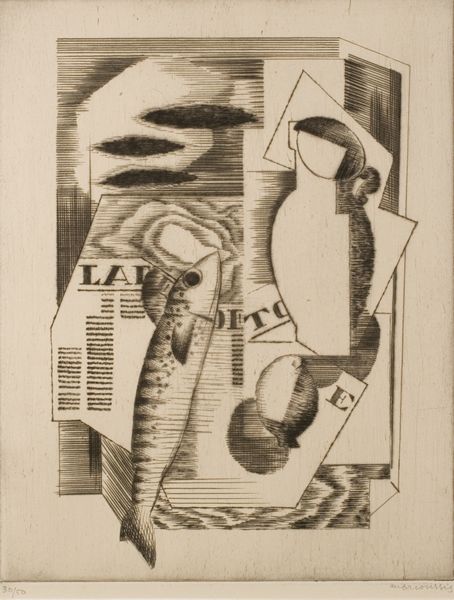
drawing, print, etching, ink, engraving
#
drawing
#
ink drawing
# print
#
etching
#
german-expressionism
#
form
#
ink
#
abstraction
#
line
#
engraving
Copyright: National Gallery of Art: CC0 1.0
This is "Die Verwandelte Wunderblume," or "The Transformed Wonder Flower" made by Imre Reiner, who lived from 1900 to 1987. It's an etching, a printmaking technique that involves biting lines into a metal plate with acid. The process begins with covering a metal plate with a waxy, acid-resistant ground. The artist then draws through the ground, exposing the metal. When the plate is dipped in acid, the exposed lines are etched, creating grooves. These grooves hold ink, which is then transferred to paper under pressure. Look closely, and you can see the character of the etched line. It is not as clean as a line drawn with a pen; it has a slight roughness and a bitten quality that gives the print a unique texture. The labor-intensive nature of etching contrasts with the quick reproducibility of the final image. This tension between craft and industrialization is central to understanding the print's appeal.
Comments
No comments
Be the first to comment and join the conversation on the ultimate creative platform.
